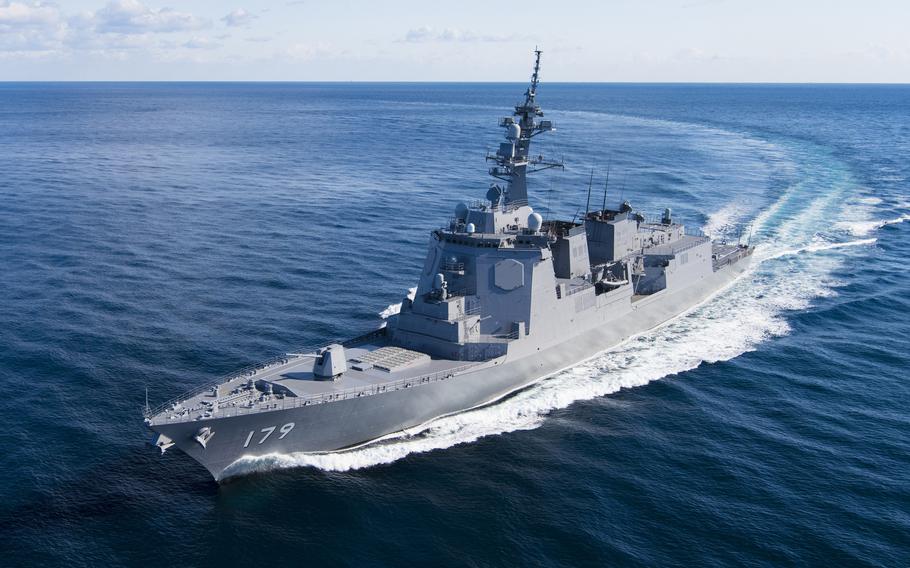
Japan plans to upgrade its eight Aegis-equipped destroyers, like the JS Maya, with Block V Tomahawk missiles purchased from the U.S. (Japan Maritime Self-Defense Force)
YOKOSUKA NAVAL BASE, Japan — The Japanese government plans to upgrade its eight Aegis-equipped guided-missile destroyers over coming years with Tomahawk cruise missiles purchased from the U.S., a Japanese news agency reported recently.
Japan plans to acquire the newest Block V Tomahawks, which feature navigational and targeting upgrades, by fiscal 2027, Kyodo News reported Saturday.
The Japan Ministry of Defense did not respond by Wednesday to questions from Stars and Stripes on Monday.
The planned Tomahawk purchases continue Japan’s efforts to significantly expand its military capabilities, including the adoption of its largest-ever defense budget, $51.4 billion for the coming fiscal year, and plans to acquire another 400 Tomahawks to develop “counterstrike capabilities.”
Japan has eight destroyers equipped with the Aegis Combat System; the same air-defense system used by the U.S. Navy’s Arleigh Burke-class destroyers. The U.S. Navy describes Aegis as a “total weapon system, from detection to kill.” It can track more than 100 targets through its high-powered AN/SPY radar.
The Japan Maritime Self-Defense Force also plans to add two more Aegis destroyers by fiscal 2032, along with two additional ballistic missile defense warships, according to the country’s Defense Buildup Program released in December.
Critics at home and abroad find fault with Japan’s military buildup. Japanese media polls routinely show a divide in public opinion on whether the country should amend Article 9 of its constitution, which prohibits war or “the threat or use of force as a means of settling international disputes” and forbids the maintenance of “land, sea and air forces.”
However, the Japanese government interprets the clause to allow for armed forces for defensive purposes, according to James Brown, an international affairs expert at Temple University’s Japan campus.
“As such, in the view of the Japanese government, Tomahawk missiles are also constitutional so long as their possession is for the purpose of self-defense and not aggression,” he said in a Monday email to Stars and Stripes.
Two nations at the heart of regional tensions were predictably critical of Japan’s military plans. North Korea’s Foreign Ministry bashed Japan’s pursuit of counterstrike capabilities as formalizing “the capability for preemptive attack,” according to a Dec. 20 report from Reuters.
A Dec. 16 statement from China’s Embassy said Japan was provoking “regional tension and confrontation.”
Japan’s increase in defense spending doesn’t reflect a trend towards hawkishness, however, but instead reflects the “the intensity of Japanese security concerns” about neighboring countries, according to Brown.
“Leaders in Tokyo watch in alarm as China becomes more authoritarian and boosts defense spending, North Korea fires ever more missiles in Japan’s direction, and Russia invades Ukraine and issues nuclear threats,” he said in the email. “In this context, the Japanese government feels it has no option but to increase its defensive capabilities.”